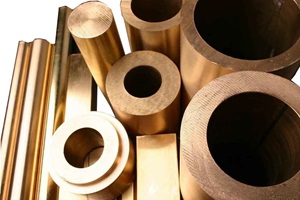Bronze rolling
 Bronze rolled products are made from a copper alloy containing tin and other alloying elements, such as aluminum, lead, nickel, beryllium, silicon, and phosphorus. The specific properties of bronze depend on the proportions of these elements; for instance, higher tin content enhances corrosion resistance.
Bronze rolled products are made from a copper alloy containing tin and other alloying elements, such as aluminum, lead, nickel, beryllium, silicon, and phosphorus. The specific properties of bronze depend on the proportions of these elements; for instance, higher tin content enhances corrosion resistance.
Bronze Alloy Markings
To identify the composition of bronze alloys, specific markings are used:
- A – aluminum;
- C – lead;
- P – phosphorus;
- Mn – manganese;
- N – nickel;
- Fe – iron;
- Sn – tin.
In addition to letters, the markings include numbers to indicate the percentage of each component. For example, BrOCS 5-5-5 denotes a bronze alloy with 5% tin, 5% aluminum, and 5% lead.
Properties and Advantages of Bronze
Bronze components are known for their corrosion resistance and low wear, making them ideal for parts under constant movement, such as bearings, springs, and flexible membranes. Key advantages include:
- Ductility – easy to work with and resistant to deformation;
- Resistance to temperature fluctuations;
- Good thermal conductivity;
- Resistance to aggressive environments (e.g., acids and other chemical solutions);
- High strength.
Types of Bronze Rolled Products
- Bar Stock: Includes squares, rectangular bars, circles, and wires.
- Sheet Metal: Rolls, sheets, and strips with varying thicknesses and treatments.
- Pipes: Available in seamless or welded forms with circular or square cross-sections.
Applications
Bronze rolled products are widely used across industries, including:
- Machinery Manufacturing;
- Shipbuilding;
- Instrumentation;
- Construction;
- Aviation and Automotive Industries.
There are no products to list in this category.
